[et_pb_section admin_label=”section”]
[et_pb_row admin_label=”row”]
[et_pb_column type=”4_4″][et_pb_text admin_label=”Text”]Pencil grasp development in preschoolers is a complex topic. Acquiring the correct pencil grasp is one of the most important physical skills children develop and most of that takes place during the preschool years. Children transition from holding a pencil with a very crude grasp to something that nearly resembles a more advanced, adult-like hold.
To work on more preschool fun, check out our Ultimate Preschool Activity Pack!
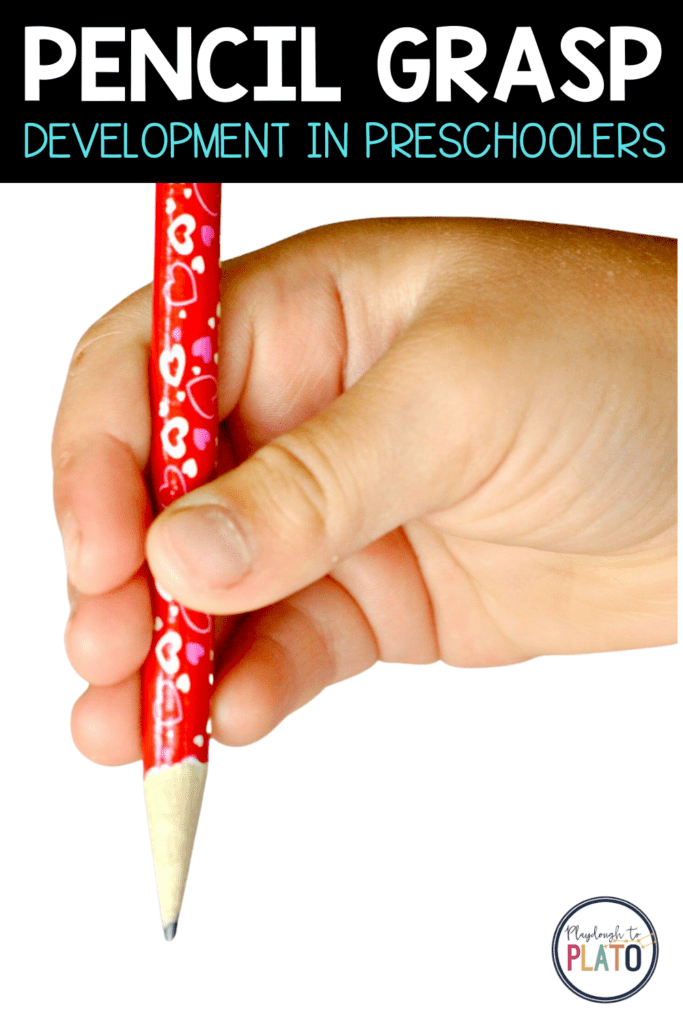
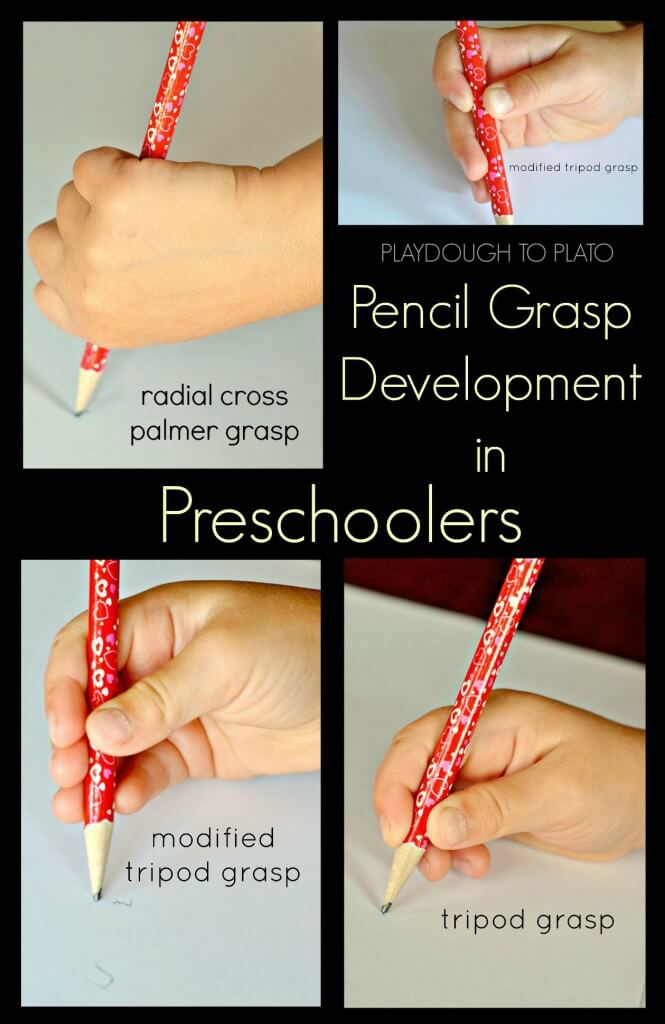
This is the second post in a series of three where I go in depth about pencil grasp development. Yesterday, I shared how baby’s first grasps develop into the beginning pencil grasps common for toddlers. Today is all about how preschoolers transition from those common grasps used by toddlers into a grasp that is more developed and allows more control. Finally, tomorrow I will share what a proper pencil grasp looks like and when parents should begin to worry about their child’s pencil grasp.
Pencil Grasp Development in Older Toddlers
Between two and three years of age, a child’s pencil grasp will transition from the cylindrical grasp (this fisted, whole hand grasp) into the radial cross palmer, where the fingers are all pointed down toward the paper, rather than the palm.
All fingers and the thumb are still utilized in the radial cross palmer grasp, however there is less support from the palm and slightly more pressure on the fingers and thumb. This is the beginning of what looks likes a traditional pencil grasp, where the control shifts from the whole hand and more to the fingers and thumb.
Many toddlers as young as two years will begin experimenting with the digital pencil grasp, and will sometimes flip flop between it and the palmer supinate grasp I wrote about yesterday.
While most children make use of the radial cross palmer grasp during those early preschool years, between two and three years-old, some children may continue to use this grasp when they are four. Parents may be inclined to worry at this point, and a discussion with a pediatrician or occupational therapist may be helpful. However, parents should never force their child to use a pencil grasp that is uncomfortable for them. That may cause bad habits to develop, which will make writing more difficult in the long term.
Instead, parents should offer their child a variety of fine motor activities to strengthen the fine motor muscles in the hands and wrists. Some fine motor activities, like threading beads or lacing cards, will exactly mimic the same grasps as holding a pencil.
Pencil Grasp Development in Preschoolers
By the time children become preschoolers, they transition into the modified tripod grasp. With this grasp it is not uncommon for children to use the entire pad of their fingers for support, rather than just the tips.
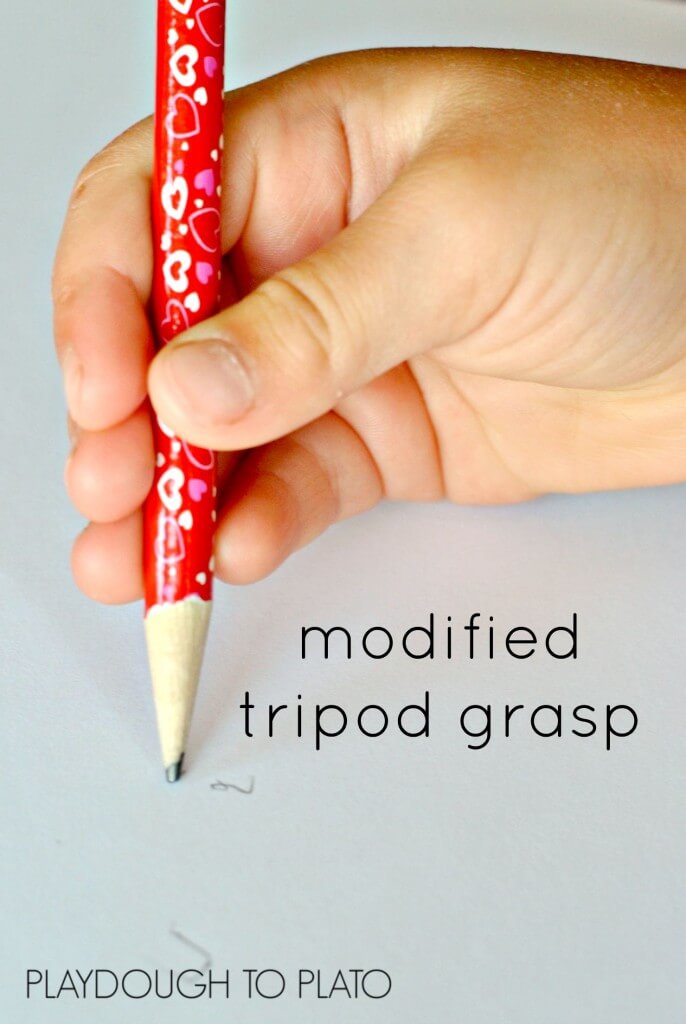
They might try to grip the pencil with unnecessary strength. In addition, in the modified tripod grasp children use the ring and pinkie fingers for added support on the pencil itself, rather than having them tucked under the pencil.
With the modified tripod grasp, the arm moves very little, as the wrist and hand control most movement in the writing process. This added control allows for the child to make more deliberate lines when drawing, such as completely closed circles, making squares with four obvious corners, or making an “x.” And these are all skills your child’s pediatrician may look for at a check-up.
Because of this added control, children may also begin to make more recognizable pictures in their drawings, such as a person drawn up of a circle, square and lines for arms and legs, something included in kindergarten screenings. Making drawings like this are an excellent way to develop writing skills. Doing so will make the transition to formal letter formation in kindergarten easier.
While the modified tripod grasp is close to the targeted pencil grip that is recommended by occupational therapists, it is not the same, and therefore a child who consistently uses the modified tripod grasp beyond what is developmentally appropriate may experience fatigue and other side effects while writing.
Correct pencil grasp becomes increasingly important as a child nears formal schooling where more writing will be required. Again, exposure to various writing and art materials will improve pencil grip, as will fine motor activities that do not require a pencil and paper. Activities like popping bubble wrap, squishing playdough, and twisting nuts onto bolts will increase the strength of fine motor muscles and will thus have a positive impact on pencil grasp development.
What Happens Next?
Find out what a correct tripod and quadruped pencil grasp looks like, why occupational therapists and pediatricians recommend those specific pencil grasps, and when parents should begin to worry here.
For More Information
Please note that I am an experienced preschool teacher, not an occupational therapist nor a pediatrician. This information is provided to you via my own research. If you have questions or concerns, please direct them to the appropriate specialist.
For more information about pencil grasp development, please check out the following links:
Difficulties in Writing by Dr. Mel Levine
Pencil Grip: a Descriptive Model and Four Empirical Studies by Ann Sophie Selin
Comparison of Pencil-Grip Patterns in First Graders With Good and Poor Writing Skills by Colleen M. Schneck
Want more preschool learning!? Check out our super awesome Ultimate Preschool Activity Pack in our shop![/et_pb_text][/et_pb_column]
[/et_pb_row]
[/et_pb_section]


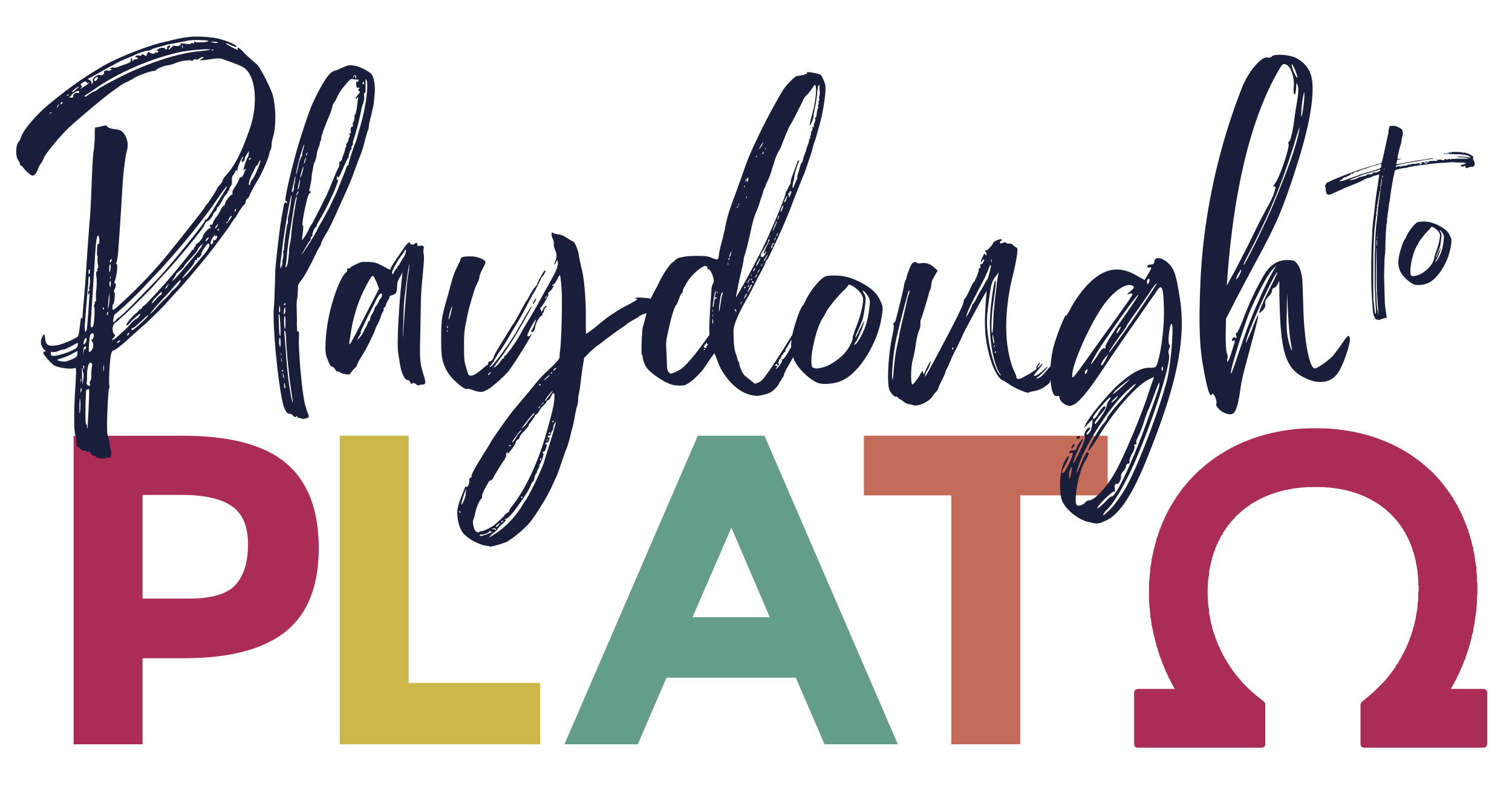
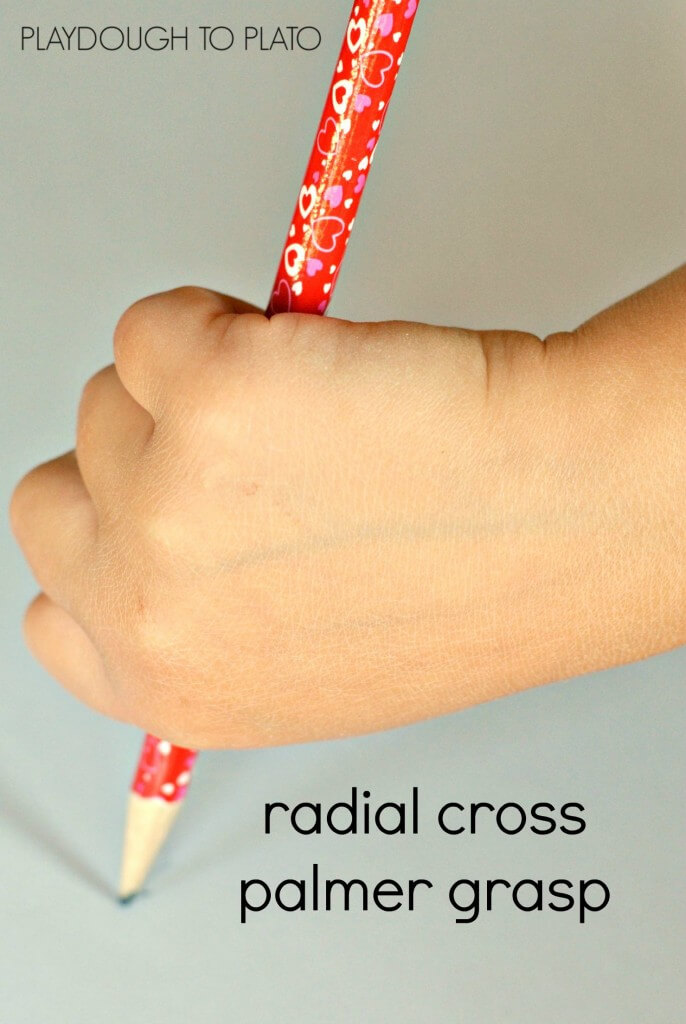

Do you suggest correcting the child? And if so at what age I teach 3-5 year olds.
Thank you
Hi I found these writing books on amazon. They are very teacher, parent and children friendly. Love them.
https://www.amazon.com/dp/B09RVHVFJQ?binding=paperback&ref=dbs_dp_rwt_sb_pc_tpbk
I have a now 5 year old in my preschool classroom that still uses the modified tripod grasp. I have given her a sponge to hold with her ring and pinky fingers to help her “remember” the correct grip. But, when she does not have the sponge, she always goes back to the “wrong” grip. She has a hard time cutting too, Any more suggestions to get her grip right before she goes to school?
Give her small writing utensils as this will encourage a three point finger grip. Crayons, short pencils, or break them if you have to in half. also, try those little butterfly clips. If you put one at the bottom you can encourage her to place her pointer finger in the middle of the “butterfly wings” and her thumb outside of the left wing (if she is right handed). Another great trick is using those mini plush pom poms. Give her one while she is using a writing (small) utensil and see if she can grip the pom pom with her last 2-3 fingers (ring and pinky or thumb, ring and pinky) to keep them away from the pencil. So for example, she would hold the pom poms under her middle, ring and pinky finger as she cups those fingers in towards her palm
We have several family members that are left handed or ambidextious. My grandaughter is 5 and still uses both hands to hold her silverware. She hasnt figured out which is her dominate hand and its slowing down her progress with writting. Any suggestion how we can help her?
I came across this page while searching Google for age appropriate pencil grasps. My son is 21 months old and currently uses a combination of the modified tripod grasp and the regular pencil grasp. This is absolutely mind boggling to me and my family, I didn’t know a child under 2 could do anything above maybe the radial cross Palmer grasp. I sure didn’t think it was possible for a child under 2 to have the skill to do modified tripod grasp with ease! I can’t wait to show his pediatrician next month lol. He has always hit milestones a few weeks or months early, but nothing this surprising!!
That’s amazing, Amy!
Thanks so much for sharing 🙂
Warmly,
Ashley // Happiness Ambassador
My daughter is just 23 months and most of the time is using a regular pencil grip on her writing utensils. I use large crayons (not jumbo but large Crayola crayons) and her stylus is slightly fatter then a pen for tablet educational activities like ABC mouse. I was very surprised myself when she took so quickly and easily to a standard grip. I have raised my nephew from early infancy and although he is on the autism spectrum he is not intellectually disabled and is very high functioning but getting him to hold any wrighting utensils properly was a battle. He was in late kindergarten before he could do it with a grip form on the pencil…
I was searching for photos of a three-point finger grasp as I am getting my diploma in a few weeks in Early Childhood Education and development and currently interning in a preschool classroom with three to four year olds. I am not intending to insult anyone, I am just surprised (and a little concerned) with seeing comments on here from teachers with children around this age and asking ways to help them in their writing and scissor skills. Another name for that would be fine motor skills/development. I’m just confused, were these teachers not taught about fine motor development in preschoolers? This is why, in the book Professionalism in Early Childhood states how difficult it is for Early Childhood educators to be called a legitimate profession because the field is so broad and so are the requirements. My friend in practicum with me whom has a B.A in psychology said this past year is the most workload of any classes shes ever had before. The amount of content in early childhood development that we are taught is insane and the amount of intentional work we do is even crazier! We write our own curriculum as students and every activity plan, circle time lesson and story time is intentionally planned to help further development in whatever area of development the activity correlates to (physical, writing/reading, social/emotional, science, math etc.). My point is that as a new child educator in the field, after having so much information crammed into our brains to get an A.S in early childhood in Hawaii, it is mind boggling that a preschool teacher is asking advice about how to help further a childs scissor and writing development. This should be something a preschool teacher already knows as it is an important and popular part of development in young children. Also, there is no “wrong” way to do something if one is teaching preschoolers in developmentally appropriate way. Is this not taught in other places? Also, I realize that some places allow one to be a teacher without a degree, only certifications and sometimes not even that and that some people call themselves teachers when they might actually really be a daycare worker or a teachers assistant or an EA….etc. Again, this is why we are having difficulties in getting Early childhood education labeled as a profession. Check out the book Professionalism in Early Childhood Education by Stephanie Feeney. Very interesting! Again, I am a very nice person and not insulting or judging anyone. I am just a little surprised, confused, concerned and intrigued all at the same time lol.